#Plantagenet dynasty
Text

Moodboard: Henry II, King of England (1154-1189).
#plantagenet dynasty#plantagenets#plantagenet#house of plantagenet#middle ages#medieval england#Henry fitzempress#Henry II of England#Henry II#King Henry#King Henry II#King Henry II of England#Moodboard#Plantagenet edit
25 notes
·
View notes
Text
hiii can you guys recommend me a history book that covers english history from the norman conquest to the battle of bosworth?? i'm feeling very shaky on my normans and plantagenets and want to fill up some gaps
13 notes
·
View notes
Text


Selected images from “The Bute Book of Hours”.Above we spot Henry VII, King of England (1485-1509) with his wife, Elizabeth of York, Queen of England (1486-1503) praying with their offspring: Arthur, Prince of Wales (1486-1502), Margaret, Queen of Scots (1489-1541), Henry VIII (1491-1547) and Mary, Queen of France (1496-1533).
We also see Henry VI, King of England (1421-1471) portrayed as saint. Worth noting is that Henry VI was the main link to the Tudors (being the uncle to Henry VII), without whom there would be no dynasty to inherit the claim to English throne. Furthermore, Henry’s sainthood, despite unacknowledged by the Church (notwithstanding Henry VII’s efforts), was already sparkling in the twilight of Edward IV’s reign--much to his dismay as Lauren Johnson, Henry VI’s biographer, states. Yet, to be related to this saint king is also showing how God blessed the rise of a new dynasty. It is also said that Henry VIII was devoted to his great-uncle’s sainthood, in spite of all the reformation process that marked his reign.
This book of hours, probably produced in the last years of the reign of Henry VII, was later given to his son and sucessor, Henry VIII.
#the bute book of hours#tudor dynasty#plantagenet dynasty#house of lancaster#henry vii#henry viii#book of hours#early modern england#art#illuminated manuscript
62 notes
·
View notes
Text

#house of lancaster#house of Navarre#house of Brittany#Joan of Navarre#Queen Joan#Joanna of Navarre#Queen Joanna#Jehanne d’Évreux#Plantagenet dynasty#Valois dynasty#house of valois#maison des valois#Henry IV#John V#Lancastrian edit#Lancastrian consort#queen of England#medieval England#naomi watts#Jodi comer
12 notes
·
View notes
Text
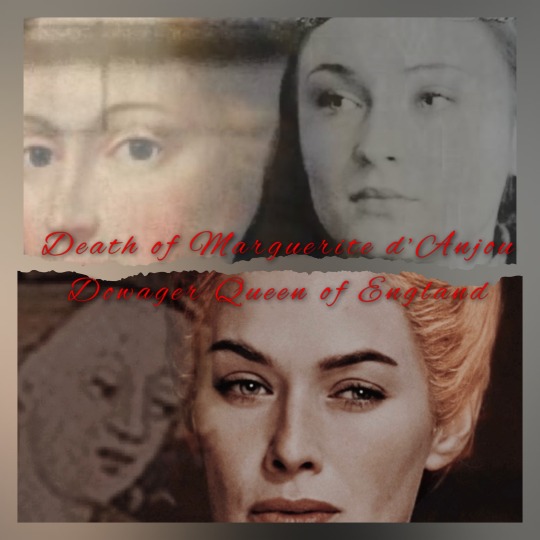
“24 August 1482
From the fairytale turrets of Saumur Castle, atop which golden fleur-de-lys glistened in the summer light, to the bulbous towers of Angers, where the château loomed on a cliff edge above the River Loire, the funeral cortege of Margaret of Anjou carried the queen on her last journey.
For six years she had been exiled back to the lands in which she grew up, a half-welcome guest of her father and King Louis, with little more than hunting dogs, books and a casket of relics to remind her of past glories. She was going now to rejoin her ancestors. Her last request to King Louis was that he would allow her to be buried with her parents: in their sepulchre at Angers Cathedral.
Since her capture at Tewksbury in 1471 Margaret's life had become one of solitary retirement. She had not stayed long in the Tower of London, although she must have been there when Henry was killed.
For a time she was kept at Windsor Castle, and by January 1472 she had moved to Wallingford in Oxfordshire, where her keeper was her old friend, Alice Chaucer, dowager duchess of Suffolk.
The women had once been close, Alice perhaps even having something of a maternal place in Margaret's heart. Since Suffolk's murder their lives had taken very different courses, and their enforced time together during Margaret's imprisonment cannot have been entirely happy.
Where Margaret had resisted the Yorkist regime with all her strength, Alice had come to terms with it even before Henry VI was first deposed. In 1458 Alice had overseen the marriage of her only child, John, to York's daughter Elizabeth. At the time this must have seemed a dangerous move, but her gamble had paid off. Her son still lived, a prominent member of the court of King Edward IV, and a king's brother-in-law.
Margaret, by contrast, had lost her family to the wars. Under house arrest, she was reliant on Edward to provide her with enough money to cover the expenses of herself and her servants.
One of those servants was Lady Katherine Vaux. Katherine had lost her husband, Margaret's old servant Sir William, at Tewksbury and the pair were bound so tightly together, whether through shared grief or the loyalty of many years' service, that Katherine stayed with Margaret until the end.
The pair of them probably appear in an image in the Guild Book of the London Skinners' Fraternity in 1475. Margaret wears an ermine-lined dark gown, her head covered like a nun, kneeling forward to read a religious text from her prayer book while a discarded crown and sceptre lie beside her. Behind Margaret is a more fashionably dressed woman, evidently in attendance on the queen, with her prayer book in her hands, her eyes more on her mistress than her prayers.
Both Katherine and Margaret were members of this fraternity in honour of the Assumption of the Virgin Mary who Margaret, like Henry, always particularly revered. As this image in the Skinners' record suggests, Margaret's imprisonment under Edward IV was not especially stringent.
Other members of the Skinners' Guild Fraternity included Queen Elizabeth Woodville and her ladies, so the fraternity would not have risked their ire by welcoming Margaret without their consent.
Margaret was provided with clothing, mostly black, at royal expense and had enough freedom not only to join this guild but also to enjoy the services of the dean of Edward's chapel in 1474. Having moved from Wallingford to London for most of the intervening years, in 1475 an international treaty between Edward and Louis XI was finalized that ransomed Margaret to Louis for £50,000.
In return for being able to return to her father's territories with a small pension from Louis, Margaret was forced to renounce all of her claims not only in England but also in France. The woman who had clung so tenaciously to her family's right to the English crown was now willing to give up virtually everything she owned to go home. After all, there was no one to inherit her titles or lands after her death. Thus, in November 1475, she was transferred into the keeping of Sir Thomas Montgomery to be escorted to France.
For several years Margaret lived in her father's castle at Reculée, near Angers, but when René died in 1480 she had to rely on one of his servants to provide her literary interests. Some years earlier she had commissioned the Burgundian memoirist Georges Chastellain to write Le Temple de Bocace, a consolation piece dwelling on the changing fortunes of the world and the unjust criticism that had been levelled at her.
Presumably she also occasionally rode or hunted through the verdant rolling fields and woodland surrounding her, enjoying at least one pastime from her old life. Margaret may have ridden from her modest home at Dampierre to the more imposing Château Montsoreau on the banks of the River Loire, over time she developed enough of a relationship with he castle's owner, Madame de Montsoreau, to gift her all of her hunting dogs shortly before her death - a high-status offering for a lady who had perhaps been a friend in the queen's last years.
In the summer heat of 1482 Margaret fell ill and, with the faithful Katherine Vaux at her side, she made her last will and testament on 2 August. Louis XI, who had once mocked her proud writing style, would have found little to displease him in the humble petitions that filled this short document.
'Sound of mind, reason and thought, however weak and feeble of body', Margaret asked to be buried in the cathedral church of St Maurice in Angers beside her parents, 'in whatever manner it pleases the king to ordain, or in another place if he prefers'.
She wrote that she did not have enough money to cover the cost of the funeral and suggested that Louis sold her remaining possessions to pay for her burial - as indeed he did.
And perhaps thinking of Lady Katherine, she 'recommend(ed] very humbly and affectionately' her 'poor servants... to the good grace and charity of the said King'. She had evidently lived on the charity of others for some time, and implored Louis, as her sole heir, to cover any remaining debts she had incurred.
Louis did as Margaret asked and had her honourably buried with her parents, but he insisted on reclaiming the hunting dogs that she had gifted to Madame de Montsoreau. 'You know (Margaret] has made me her heir, the king reminded Montsoreau in a letter written days before the queen actually died, 'and that this is all I shall get; also it is what I love best. I pray you not to keep any back, [or] you would cause me a terribly great displeasure’.
Even in death, Henry and Margaret were the pawns of others.”
JOHNSON, Lauren. “Life and Death of Henry VI”.
Fan cast: Sophie Turner as young Marguerite and Lena Headey as Queen Marguerite.
#margaret of anjou#Marguerite d’Anjou#reine marguerite d'angleterre#queen Marguerite#queen margaret of Anjou#queen margaret#house of lancaster#Plantagenet dynasty#wars of the roses#cousin’s wars#Katherine vaux#Alice chaucer#Edward iv#Elizabeth of York#duchess of Suffolk#Henry VI#king Henry VI#Louis XI of France#Louis XI
19 notes
·
View notes
Text
Read the next book in the history sequence:
At the one hand this author does not lie about what he does, or how he does it. He is unapologetically biased in favor of the British and the claims of the Plantagenets to an empire and the throne of France, and this leads to some choices of phrase that explain much about why Scots and Welsh people have good and cogent reasons to despise everything about the English.
If the reader can get past that or would want to, it's a history that provides a surprisingly good look at bottom-up and top-down views of the Hundred Years War in a short, coherent narrative that remembers in the end that the history of a war needs to keep in mind the forest and not just study the patterns on the bark or the shap eof a root.
8/10
#lightdancer comments on history#hundred years war#medieval history#medieval british history#medieval french history#plantagenet dynasty#valois dynasty
0 notes
Text






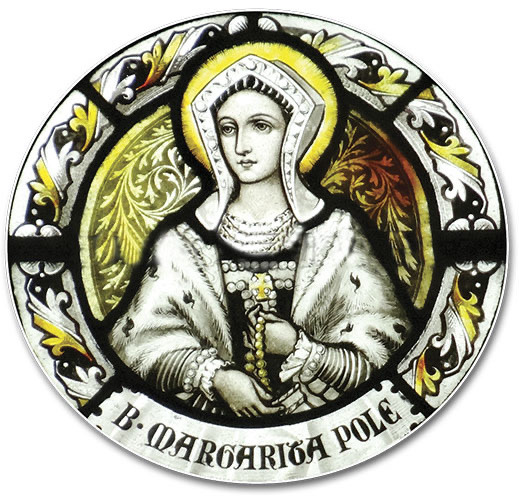
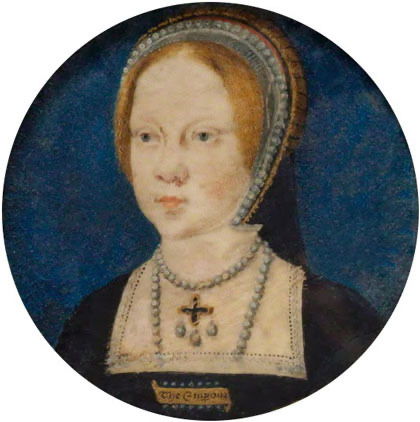
Tudor Week Day 7: Fave Mentor/Mentee Relationship: Margaret Pole, Countess of Salisbury and her charge Mary I
“On 28 May Mary suffered another blow to her emotions. Lady Salisbury was taken from her cell and executed, protesting that she did not know what her crime had been- there had been no trial and no opportunity for her to protest against the Act of Attainder…. Her [Margaret’s] last speech was a prayer for the king, queen, prince and Mary. There is no direct evidence of Mary’s reaction, but unless she were completely heartless, which is not the impression to be gained from her letters or general demeanor, she grieved deeply for the woman who had been her “second mother” and who had loved and cherished her since childhood…” - Melita Thomas, “The King’s Pearl”
#tudorweek2023#tudor week 2023#daily tudors#dailytudors#mary i#Mary Tudor#queen mary i of england#queen mary i#mary i of england#margaret pole#henry viii#tudor history#the tudors#catherine of aragon#english history#tudor era#tudor period#tudor#tudor dynasty#plantagenets#british history#history#mary i tudor#henry viii of england#king henry viii#henry tudor#wars of the roses#renaissance#16th century#sixteenth century
108 notes
·
View notes
Text
Watch "Richard III || Dynasty" on YouTube
youtube
So currently i am on this Aneurin Barnard obsession phase and it has been going on for quite a while. Like i am not able to move on from his performance as king Richard in the series. Hated the incest with the niece part and am very glad to know it most likely didn’t happen in real life. Btw, this edit just slaps.
#Richard the third#richard iii#aneurin barnard#war of roses#twqedit#the white queen#anne neville#elizabeth woodville#duke of gloucester#richard plantagenet#Richard York#york#lancaster#Dynasty#twq#medieval#medieval edits#England#monarchy#english monarchy#edward iv#george plantagenet#duke of clarence#i swear anything just works with this song#historical edits#historical drama#starz#phillipa gregory#the kingmaker's daughter#the sunne in the splendor
51 notes
·
View notes
Text

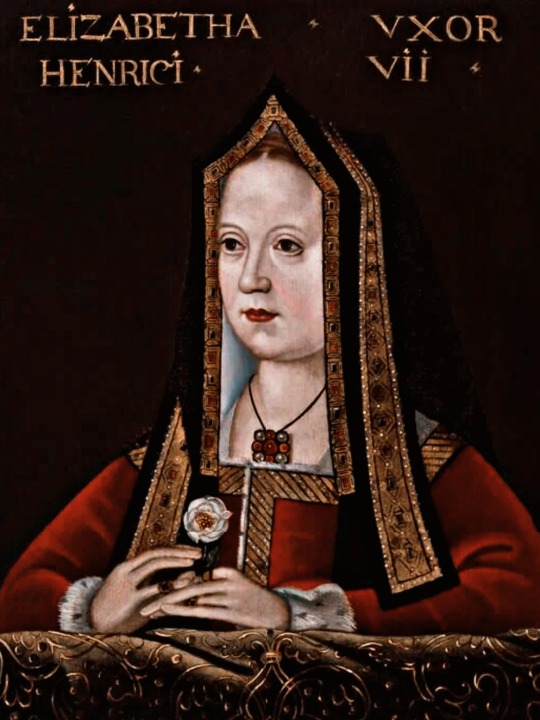
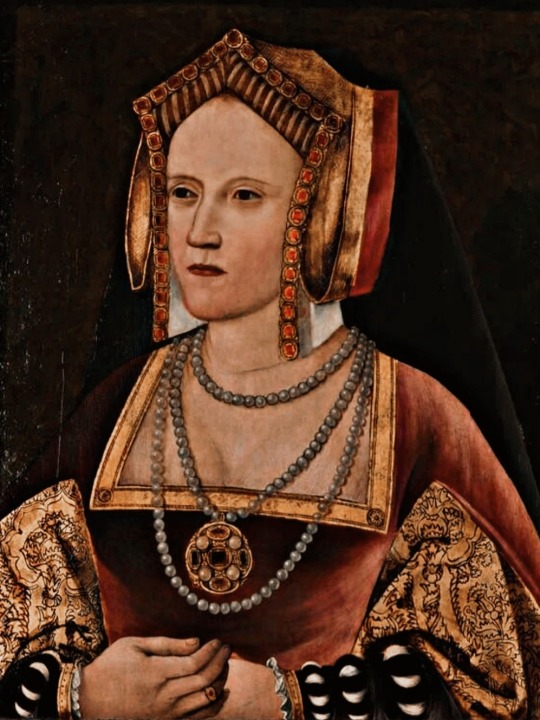







CONSORTS OF ENGLAND SINCE THE NORMAN INVASION (3/5) ♚
Anne Neville (June 1483 - March 1485)
Catherine of Aragon (June 1509 - May 1533)
Anne Boleyn (May 1533 - May 1536)
Jane Seymour (May 1536 - October 1537)
Anne of Cleves (January 1540 - July 1540)
Catherine Howard (July 1540 - February 1542)
Catherine Parr (July 1543 - January 1547)
Lord Guildford Dudley (July 1553 - July 1553)
Philip II of Spain (1554 – 1558)
#my photoset.#anne neville#elizabeth of york#plantagenets#house of york#war of roses#the tudors#tudor era#house of tudor#tudor dynasty#catherine of aragon#anne boleyn#anne of cleves#catherine howard#catherine parr#jane seymour#henry viii#henry vii of england#lady jane grey#guildford dudley#philip ii of spain#queen mary#historical royals#history#english history#queen consort#prince consort#british royals#historyedit#consorts of england and britiain.
103 notes
·
View notes
Text
Several years ago I remember seeing this chart someone put together where they graphed the number of people executed during each of the Tudors’ reigns and the purpose of the chart was basically to prove which were the “best” Tudor monarchs (the best ones being the ones who executed less people)
1. They all executed people. Even executing one person is still killing one person. I don’t know about you, but I’ve never killed a person ever so…
2. What kind of sick, twisted world are we living in that simply executing less people than others makes you a better person.
#just…the way that people talk about tudor monarchs is so fucking weird#and people don’t talk about other english dynasties this way#i’ve never seen anyone talk about the plantagenets in the same way#or the stuarts
5 notes
·
View notes
Text


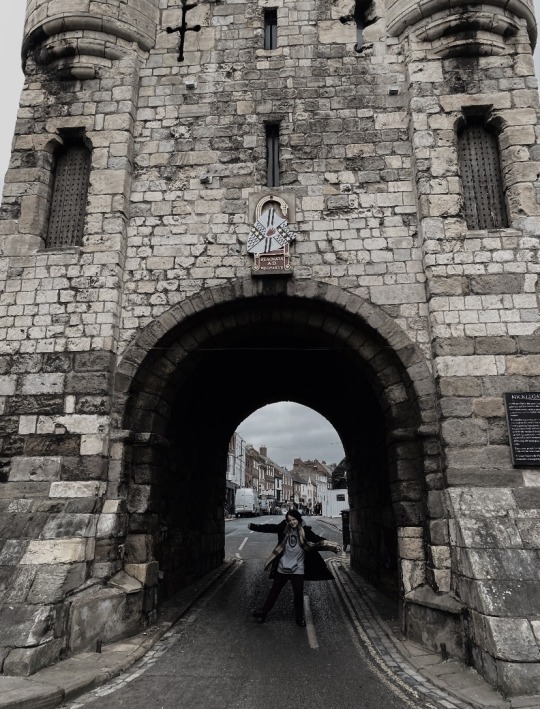


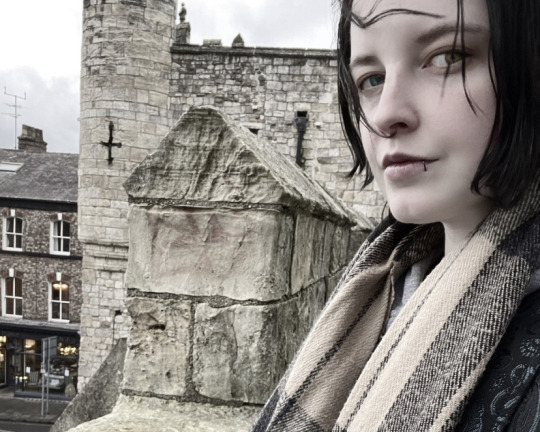

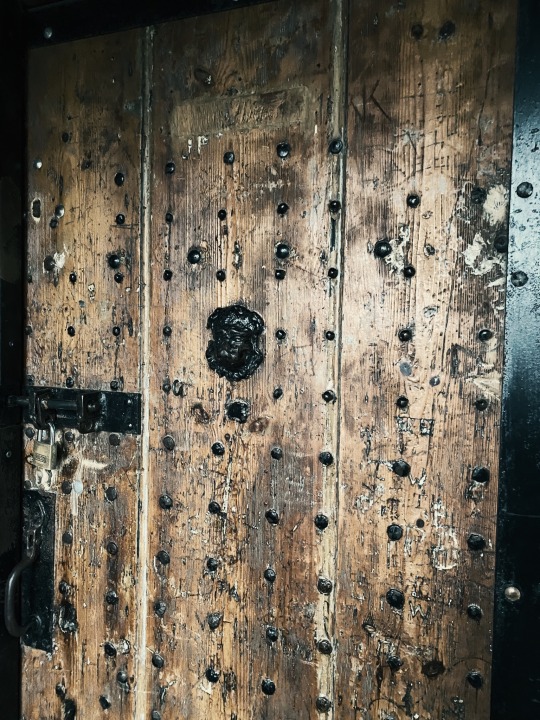
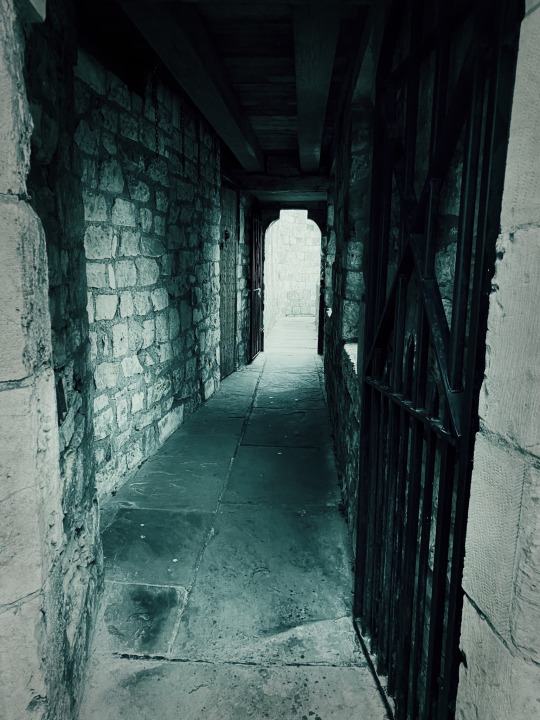

I didn’t manage to cosplay Richard iii (the version of Richard in Requiem of the Rose King) to pay homage upon the place his head was displayed as a rebel and traitor within his own home, York, fuelled with obscene rumours to the point where it was said he was in his parents womb for 2 years and a demonic monster over his body, and it was believed, over trying to rule during the War of the Roses.
Amongst downfalls, rumours are spread to ready a more secure a more loved position and angelic assumed appearance for the ones taking over as not to allow for a mutiny essentially and uproar against the new ones replacing them to take over, and cover ups to present a new line as Good, and only Good for the people.
It is said he obviously had his wrongs, but comparably it was better to a lot during that time of who was veering for power.
There’s a lot of false poison placed as fact, much which was never proved, and much which was just obvious bull now we look at it these days, and this was done to remove the return of certain families during War which threatened those who wanted to have their status.
The utmost end point is to secure a throne, and people will do absolutely anything.
This place is known as the Micklegate Bar, many people have passed beneath it and many heads have been presented upon it, it is the southern entrance to York.
I made it here, and I’m glad. A rich piece of history of a truly awful time upon these islands.
#richard plantagenet#richard iii#king richard iii#micklegate bar#war of the roses#battle of bosworth#city of york#yorkshire#Yorkshire history#York history#history#listed building#Yorkist dynasty#my photography#my photos#my face#requiem of the rose king#bara o no souretsu#baraou no souretsu#aya kanno#anime#historical anime#historical manga
35 notes
·
View notes
Text

Richard III, King of England. (1483-1485)
#plantagenet dynasty#plantagenets#plantagenet#house of York#richard iii#Richard III of England#medieval manuscripts#Middle Ages#medieval England
11 notes
·
View notes
Text
the highly specific anticipation of knowing a mutual is about to read a book that they are uniquely qualified to write a lengthy analysis on its failings
#this is such a petty feeling but it's TRUE#this is about the sapphic odyssey retelling and also the historically revisionist gay king book that just came out#listen my sister knows so much about the plantagenet dynasty i NEED to hear here thoughts on that book#delete later
2 notes
·
View notes
Text

A letter written by Queen Elizabeth to John de Vere, Earl of Oxford. (Circa 1492).
“To our right trusty and beloved cousin, the Earl of Oxenford
By the Queen.
Right trusty and entirely beloved cousin, we greet you well, letting you wit [understand] know how it is come unto our knowledge that, whereas ye newly entered upon our well beloved Simon Bryant, gentleman, into the manor of Hemnals (Hempnalls Hall, Sufolk) in Cotton, descended and belonging unto him by right of inheritance, as it is said, ye thereupon desired the same Simon to be agreeable for his part to put all matters of variance then depending atween him and one Sir John Paston, knight, pretending a title unto the said manor, into th’award and judgement of two learned men, by you named and chosen as arbiters atween them; and in case that the same arbiters of and upon the premises neither gave out nor made such award before the breaking up of Pasche [Easter] term, now last passed, ye of your own offer granted and promised unto the said Simon, as we be informed, to restore him forthwith thereupon unto his possession of the said manor; and how it be that the same Simon, at your motion, and for the pleasure of your lordship, as he saith, agreed unto the said compromise, and thereupon brought and showed his evidence concerning, and sufficiently proving, his right in the said manor unto the said arbiters; and that they have not made nor holden out between the said parties any such award.
Yet have not ye restored the same Simon unto his possession of the said manor but continually kept him out of the same, which, if it so be, is not only to his right great hurt and hindrance, but also our marvel.
Wherefore we desire and pray you right affectuously that ye will rather, at the contemplation of these our letters, show unto the said Simon, in his rightful interest and title in the said manor, all the favourable lordship that ye goodly may, doing him to be restored and put into his lawful and peaceable possession of the same, as far as reason, equity and good conscience shall require, and your said promise, in such wise that he may understand himself herein to fare the better for our sake, as our very trust is in you.
Given under our signet at my lord's Palace of Westminster, the xxv day of June,
Elesebeth.”
WEIR, A. In Blest Wedlock. In: Elizabeth of York: A Tudor Queen and Her World. pp 199-200. United States. 2014.
#Tudor dynasty#house of Tudor#The Tudors#House of York#Plantagenet Dynasty#Plantagenet#Plantagenets#House of Plantagenet#Cousin’s Wars#Wars of the Roses#Elizabeth of York#Queen Elizabeth of York#Queen Elizabeth of England#Queen Elizabeth#Henry Tudor#Henry VII#Tudor England#Tudor history
48 notes
·
View notes
Text

On this day in History, 10 June 1432, Jeanne d'Évreux, daughter of Navarre, died at Havering-atte-Bower. She was formerly Duchess of Brittany by her first marriage, and Queen of Enfland by her second marriage, which was a love union. Despite being imprisoned for some years by her stepson, Henry V, Joan (as she was better known by her English subjects) still received visits from her stepchildren such as Humphrey of Gloucester and John of Bedford, but more often her Beaufort in-laws like Cardinal Beaufort. She was buried next to Henry.
#house of lancaster#house of evreux#jeanne d'evreux#joan of navarre#henry iv of england#queen joan#dowager queen of england#dowager duchess of brittany#plantagenet dynasty
12 notes
·
View notes
Text
DEATH OF AN ANOINTED KING:
THE ASSASSINATION OF HENRY VI OF ENGLAND.

“The Croyland Chronicle condemned the 'tyrant' who 'dared to lay sacrilegious hands on the Lord's Anointed' and by June word had reached France that Edward had 'caused King Henry to be secretly assassinated in the Tower... He has, in short, chosen to crush the seed.’
The Warkworth Chronicle, written no later than 1484, noted suggestively that when Henry died he was kept company in the Tower by 'the duke of Gloucester', Edward's youngest brother and the man who had only a few weeks before condemned most of Henry's surviving commanders to execution in Tewksbury. But Gloucester was certainly not alone in the Tower.
At one point during Fauconberg's rebellion, the lieutenant of the Tower, the septuagenarian Lord Dudley, was commanding a hundred soldiers there and thirty-six men are named as being in attendance on Henry during his last imprisonment. Any one of these men might have been Henry's murderer.
Even the exact cause of Henry's death was unclear. A legend soon arose that Henry had been stabbed. However, when his body was exhumed in 1910, the skull was found to be 'apparently matted with blood' and broken in several places. He may therefore have died from a blow to the head.
What is certain is that in spite of the legends that later wove themselves around Richard, duke of Gloucester, connecting his hand with Henry's death, the ultimate responsibility for it lay with Edward IV.
As constable of England, Gloucester was responsible for imparting royal justice and may have carried a royal command for Henry's death. But that order had to come from Edward.
Whatever befell Henry the night before, on the morning of 22 May 1471 his body was embalmed with wax and spices, then wrapped in linen for burial.
But before he could be laid to rest there was one last forced procession he had to make. To prove, once and for all, that the House of Lancaster was defeated, Henry's corpse was loaded on to a wagon to wind its way through London's streets to St Paul's Cathedral, surrounded by torchbearers and soldiers.
For a few days he was left on display in the cathedral, his unseeing face open to public scrutiny. As his body lay on the pavement of the church it was seen to bleed, a sign that was generally understood to indicate that Henry had been murdered.”
JOHNSON, Lauren. “Shadow King: Life and Death of Henry VI”
#house of Lancaster#plantagenet dynasty#Henry VI of England#Henry VI#Edward IV#Richard III#kingslaying#war of the roses#cousins’s war
6 notes
·
View notes